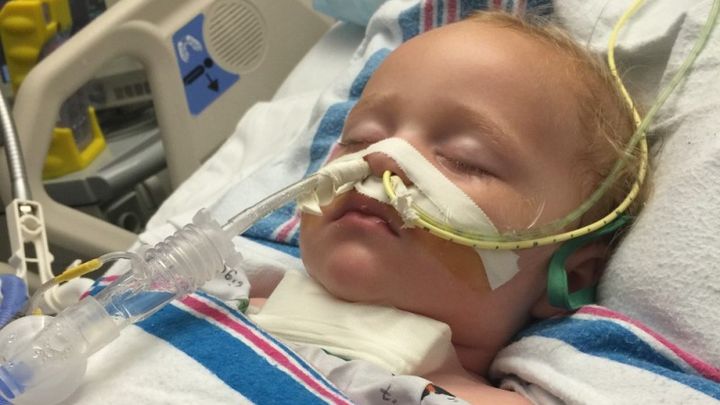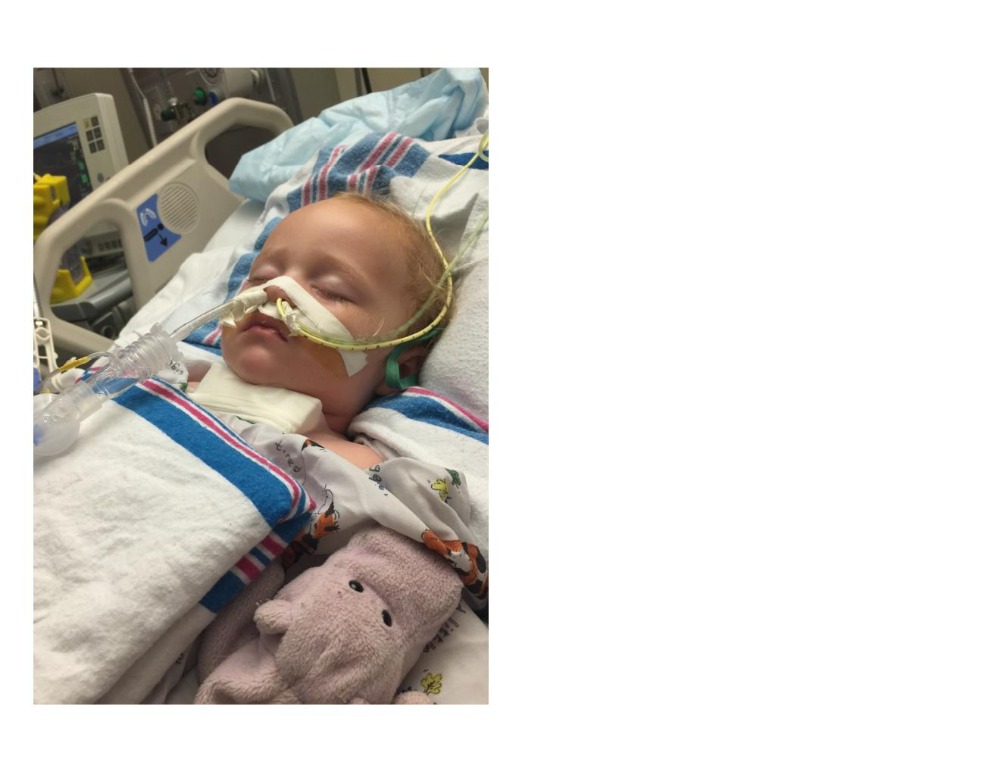
Mighty Quinn's Medical Fund
Donation protected

Quinn McGovern
Quinn is just turning 21 months old and has already been through close to 30 operations. We call her Mighty Quinn, because of the true fighter she is and all that she has been through. Each of Quinn’s hospital visits would range from 4 days to 4 weeks in New York Presbyterian Hospital. Depending on the procedure and any other complications she may have had. Quinn’s parents Michael and Melissa have split their time at the hospital in New York City with Quinn, their jobs and their home in Norwalk, CT with their oldest daughter Reilly and son Stephen.
As you can imagine, the expenses are steep between the doctors, lengthy hospital stays, medication, parking, etc., and while insurance will pay for some of it, it is still leaving a large amount that Michael and Melissa are struggling to pay. If you can donate any amount to the Quinn McGovern medical fund it would be greatly appreciated. No amount is too small!
Here is Quinn’s story….
When Quinn was just 3 weeks old, she was diagnosed with RSV and Stridor. After staying in the hospital for 1 week, Quinn was released only to return days later with trouble breathing. She was rushed to Yale New Haven Hospital. This happened on many occasions including being intubated (breathing ventilator) and sedated for a week. Michael and Melissa were desperate for answers and were able to find Dr. Modi, a doctor at New York Presbyterian Hospital who specializes in airway obstructions. Dr. Modi reviewed Quinn’s case and confirmed that Quinn has “Airway Infantile Hemangioma” which is a birthmark in her airway. Quinn’s airway was so severely obstructed, it was as if she was breathing through a cocktail straw. Dr. Modi was able to laser the largest part of the hemangioma. Quinn was again intubated and sedated until the swelling in her airway went down and she could breathe on her own. Unfortunately, the hemangioma keeps growing for the first 18 months of an infant’s life. Quinn continued with laser removal and balloon dilations for over a year. Quinn’s parents were given strict instructions when Quinn was well enough to go home, such as, “try not to let her cry, do not expose her to extreme cold or hot weather, and try to avoid anyone with a cold, flu or strep.” These were all great risks for Quinn and very difficult since Quinn has 2 older siblings, Reilly who is 8 and Stephen who is 4.
Infantile hemangiomas are unlike other birthmarks, in that they grow and change greatly during the first months of life. Infantile hemangiomas are made up of endothelial cells (cells that line the inside of blood vessels), which multiply at a quicker rate than normal. Hence, it is referred to as a benign (non-cancerous) tumor.
In very rare cases like Quinn’s, hemangiomas can develop in the internal organs of the body including the airway. Airway infantile hemangioma may form a large mass in the subglottic airway causing varying degrees of airway obstruction. They grow rapidly for at least 12 to 18 months followed by slow shrinking (called involution). However, not every subglottic hemangioma will shrink completely. Many require active intervention because of their life-threatening nature in the airway.
Quinn had to go through many treatments to get to where she is today. Her treatments would include daily medications like Propanolo and frequent use of Steroids to keep the swelling in her airway to a minimum. She had multiple hemangioma laser removal and airway dilation surgeries. (Explanation of treatments described below).
· Endoscopic airway dilation, which is sometimes used to treat certain types of narrowing in the windpipe, entails using a small balloon that is inflated in the airway to compress or stretch the stenosis.
· Lasers and microdebridement of the subglottic hemangioma carries the risk of scarring which may lead to subglottic stenosis.
· Steroids may improve symptoms but put the child at risk of many side effects. Steroid use is only advised for short periods of time.
· Laryngotracheal reconstruction (LTR) surgery is a complex repair surgery that enlarges a narrowed airway by opening a scarred area and placing rib cartilage grafts in the openings.
We can now finally say that the hemangioma has stopped growing but due to all the laser surgeries, fifty percent of Quinn’s airway is was obstructed by scar tissue. In order to correct this, Doctors had to reconstruct her airway. Quinn recently went through laryngotracheal reconstruction (LTR). The recovery process is intense for airway reconstruction surgery. Quinn will be in the hospital for at least 4 weeks completely sedated.
Quinn is a delightful little girl. She loves when her mommy makes funny faces and kisses her. She loves when her daddy sings and dances with her. Quinn loves when her big sister Reilly reads to her and teaches her new things. She loves when her big brother Stephen plays games with her and makes her laugh. Quinn may be unaware of how hard she has worked to breathe. But we are all aware of how strong our Mighty Quinn is and how hard she has worked to get here.
Organizer and beneficiary
Maureen McGovern
Organizer
Stamford, CT
Melissa McGovern
Beneficiary


